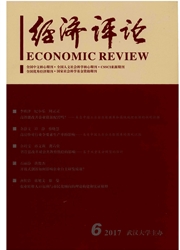

 中文摘要:
中文摘要:
本文基于集体行动理论框架,利用安徽省稻谷主产区村级调查数据分析村庄规模、收入不均等性、户均耕地规模以及外出打工户数比例等因素对村庄农田灌溉设施建设之集体行动的影响。结果表明:村庄规模和收入不均等性对村庄集体行动的影响方向都是先正后负,呈“倒u型”特征,即只有在村庄规模和收入不均等性处于中等水平时,村庄集体行动才容易形成;户均耕地规模对村庄集体行动具有明显促进作用,外出打工户比例对村庄集体行动存在抑制效应。本文分析结论具有重要政策含义:一是应合理设置村庄规模,不宜过小或过大;二是应认同适度的收入差距,防止收入均等化和两极分化;三是应加快农村剩余劳动力转移,为户均耕地规模扩张创造有利条件。
 英文摘要:
英文摘要:
Based on the theoretical framework of collective action and the village survey data from the major rice producing areas in Anhui Province, this paper analyzed the impact of village scale, income inequality, average household farming scale and proportion of migrant workers in village on collective action of farmland irrigation facilities maintenance. The results show that the impact direction of village size and income inequality on village collective action are first positive and then negative, exhibiting inverted U -shaped feature. That is, only in the middle size village or in the village with middle level income inequality will make it easier to form collective action. Average household farming scale in village has a positive impact on collective action, but the proportion of migrant workers in village has a negative impact on collective action. The conclusion has important policy implications, which mainly includes that government should be reasonable to set the village scale, to prevent income equalization and polarization, and to speed up the transfer of rural surplus labor.
 同期刊论文项目
同期刊论文项目
 同项目期刊论文
同项目期刊论文
 期刊信息
期刊信息
